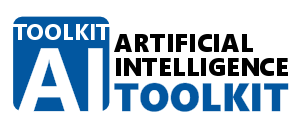Making a recommendation means that we recommend one or more items to potential users. The recommended items may be many different things, for example, physical products which are being sold (e.g., cars, smart phones, etc.) or articles, web pages, documents, etc. There are many recommender systems in use today, for example, for recommending books, movies, clothing, holiday destinations, etc., and usually they help to increase revenue and/or help users to find the most relevant, interesting and/or important information or product.
Recommendation machine learning models work with explicit and/or implicit feedback data collected from users while they are interacting with items (products, documents, etc.).
Explicit feedback is when the user provides some kind of rating or like/dislike of the items he/she is interacting with. There are many types of rating scales, for example, the five-star rating in which one star means low appreciation and five stars mean a very highly appreciated product. All of these ratings can be expressed on a numerical scale (e.g., 1,2,3,4 and 5; or 0 and 1 for dislike and like).
Implicit feedback is when the user does not directly provide some kind of rating but we collect information about user actions, for example, buying a product, viewing a document or web page, etc.
The basic principle behind how recommender machine learning models work is that correlation exists between how different users appreciate similar items, how different items are appreciated by similar users and the combination of the two (joint correlation). The user’s appreciation is expressed with explicit or implicit feedback. These correlations or behaviors can be learned by a machine learning model based on the collected explicit and/or implicit feedback data from the users (user + item + feedback).
There are two main types of state-of-the-art machine learning recommendation models:
- Collaborative filtering (CF),
- Content-based (CB).
Collaborative filtering models may use explicit and/or implicit feedback data in the form of a triplet consisting of a user ID, an item ID and the feedback value. These triplets form a three dimensional space which can be represented in a matrix or table.
Collaborative filtering models use the collected feedback data from all users (collaborative), but it usually does not use content information (description of the items). When the predicted explicit (ratings) or implicit (user actions) feedback is known, a top-k number of recommendations can be made to any user.
This article is a slightly modified excerpt from the book “The Application of Artificial Intelligence”. If you are interested in the subject then it is strongly recommended to read the book which contains many more details and real world case studies for several sectors and disciplines! The book explains several examples step-by-step by using the AI-TOOLKIT. The book is going through the publishing process at the time of writing this article. You may use the contact form for info about pre-ordering the book.
| Learn about the application of Artificial Intelligence and Machine Learning from the book "The Application of Artificial Intelligence | Step-by-Step Guide from Beginner to Expert", Springer 2020 (~400 pages) (ISBN 978-3-030-60031-0). Unique, understandable view of machine learning using many practical examples. Introduces AI-TOOLKIT, freely available software that allows the reader to test and study the examples in the book. No programming or scripting skills needed! Suitable for self-study by professionals, also useful as a supplementary resource for advanced undergraduate and graduate courses on AI. More information can be found at the Springer website: Springer book: The Application of Artificial Intelligence. |
 |











